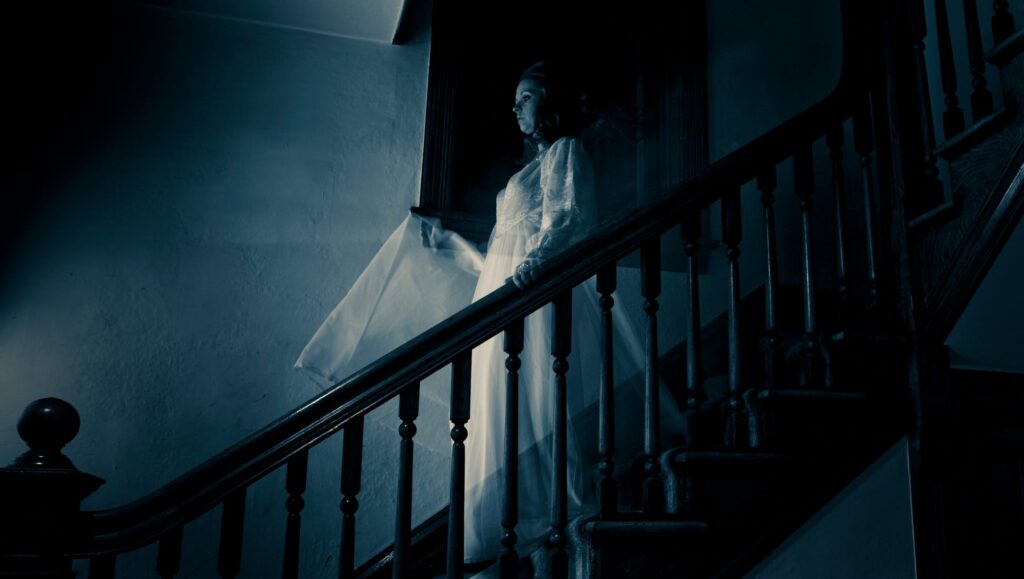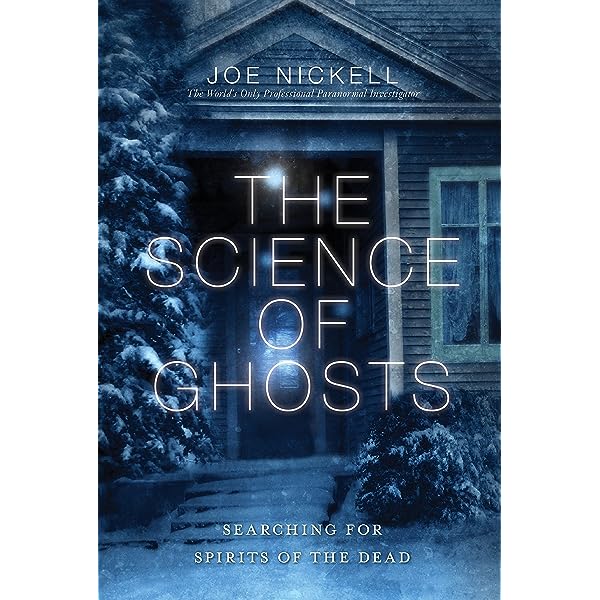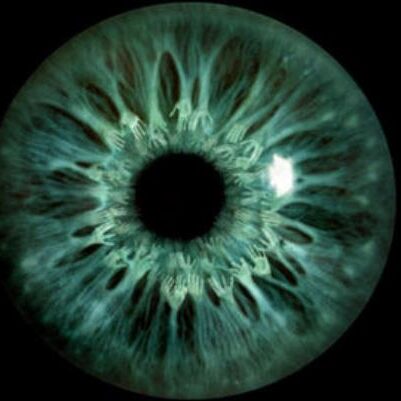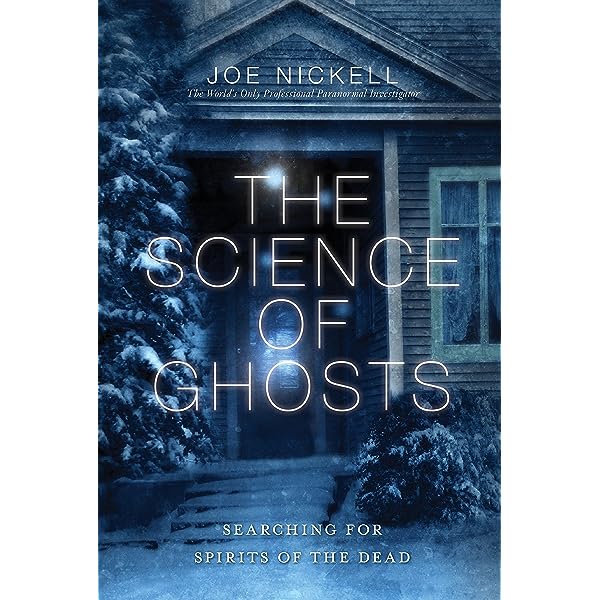The question of whether ghosts are real has intrigued and perplexed humanity for centuries. Across different cultures, legends, and histories, tales of spirits and apparitions have been passed down through generations, suggesting a universal curiosity about the unseen realm of the departed.
Many attest to personal experiences with the supernatural, sharing chilling encounters that they claim are too real to be brushed aside. On the other hand, skeptics argue that these events can often be attributed to psychological factors or explainable phenomena. Scientific communities have conducted numerous studies to answer the question, “Are ghosts real?” The results, however, are inconclusive.
Some investigations hint at the possibility of unexplained activities, while others find no tangible evidence of the supernatural. As the debate continues, the enigma of the afterlife and the existence of spirits remains one of the most enduring mysteries of our time. Whether rooted in belief, science, or personal experience, the question of the reality of ghosts remains open to interpretation.
Click here to check out the Ghost Hunting Spirit Box – MEL-8704R & K2 EMF Meter & EVP Recorder
What are ghosts?
Definition of Ghosts
Ghosts, a term that has piqued human curiosity for ages, are primarily understood as the spirits or souls of deceased individuals who, for some reason, remain tethered to the mortal realm rather than transitioning to the afterlife. Their manifestations vary widely, often described as ethereal, translucent apparitions, glowing orbs, or even as auditory disturbances like whispered voices or mysterious sounds. These entities are commonly believed to occupy places with significant historical or emotional value, often termed as “haunted.” There is also a popular belief that, under certain conditions, ghosts have the ability to exert influence over or interact with the physical world.
Beliefs about Ghosts in Different Cultures
The concept of ghosts has been present in human civilization for millennia, with each culture offering a unique perspective. In many Asian cultures, like that of Japan and China, ghosts or spirits are not just figments of lore but an integral part of their religious and cultural traditions. Here, annual festivals, such as Obon in Japan or the Hungry Ghost Festival in China, are celebrated to honor and provide for these spirits, ensuring their peace and contentment.
Conversely, many Indigenous societies across the world perceive spirits as benevolent entities. For these cultures, a spectral visitation might be considered a blessing, a source of guidance, or a protective omen. On the other hand, much of Western folklore and media portrays ghosts in a more sinister light. Tales of vengeful spirits, haunted mansions, and restless souls dominate, suggesting that such entities might bear ill intentions or have unresolved business with the living. Such diverse representations underscore the universality of ghost beliefs while highlighting the unique interpretations each culture brings to this age-old phenomenon.
Historical perspectives on ghosts
Ancient Beliefs in Spirits
The conviction in the existence of spiritual beings has its roots firmly anchored in the sands of ancient history. Before the advent of written records, primordial civilizations cultivated beliefs that transcend the tangible. Ancient Egyptians, for instance, were staunch believers in the afterlife, constructing grand pyramids as tombs, ensuring safe passage for the souls of the departed. The Greeks, too, imagined a world filled with spirits. Their beliefs in wandering souls, often trapped between realms due to unresolved affairs, are epitomized in myths and legends. In many early cultures, spirits weren’t mere tales of the unknown; they were protective guardians, ancestral watchers, and vital entities influencing the tangible realities of daily life.
Famous Historical Ghost Stories
Ghost stories, with their eerie allure, have always found a captivated audience. Historical tales, imbued with spectral elements, transcend generations. Washington Irving’s portrayal of the Headless Horseman in “The Legend of Sleepy Hollow” offers readers a spine-tingling account of a specter haunting a quiet town. Similarly, Shakespeare’s Hamlet remains a literary masterpiece, not just for its dramatic prowess, but for its haunting portrayal of a son driven to the brink by the apparition of his deceased father. Such narratives, deep-rooted in history and imagination, have etched themselves into the very fabric of literary lore and cultural consciousness.
Role of Ghosts in Folklore and Mythology
Within the vast tapestry of folklore and mythology, ghosts and spirits stand out as powerful symbols and key figures. In various folk traditions, ghost stories serve as moral compasses, instructing listeners on societal norms and cautioning against transgressions. Mythologies, meanwhile, depict these entities as bridges between the mortal realm and the enigmatic world beyond. They might serve as harbingers delivering messages from the afterlife, or as tormented souls demonstrating the repercussions of certain deeds. Across time and culture, these ghostly narratives do more than merely spook or entertain. They act as mirrors, reflecting the fears, values, and beliefs of societies that birthed them.

This image is property of Amazon.com.
Click here to check out the Ghost Hunting Spirit Box – MEL-8704R & K2 EMF Meter & EVP Recorder
Scientific viewpoint
Lack of Scientific Evidence
The ethereal realm of ghosts and spirits has long captured human imagination, but when viewed through the lens of science, tangible evidence for their existence remains elusive. Despite countless anecdotes and tales of ghostly encounters, concrete scientific proof remains conspicuously absent. Multiple research initiatives have aimed to objectively record and analyze paranormal occurrences, yet definitive, replicable results have been rare. The mainstream scientific community places a significant emphasis on empirical rigor, asserting that anecdotal accounts alone are insufficient to validate the existence of the supernatural.
Psychological Explanations
Ghostly apparitions and phantom whispers might not always be the doings of the supernatural. Psychology offers an alternate perspective, suggesting that many such encounters may be rooted in our own minds. Factors like heightened suggestibility can sway individuals into interpreting mundane or natural events as ghostly manifestations. Furthermore, our brains are wired to recognize patterns and make sense of the unknown.
Cognitive biases, including confirmation bias where one tends to notice things that confirm pre-existing beliefs, and pareidolia, where random stimuli are perceived as significant (like seeing faces in inanimate objects), can play pivotal roles in molding our interpretations of ambiguous situations. Such biases might lead individuals down a path where ordinary events take on an eerie significance.
Skepticism and Critical Thinking
In the vast arena of the unknown, skepticism serves as an invaluable tool. It beckons individuals to question, to probe, and to demand evidence. Skeptics caution against accepting ghostly tales at face value, emphasizing the importance of objective proof. The realm of the paranormal is rife with stories, but skeptics advocate for a methodical, logical approach to such claims. Encouraging an attitude of critical thinking, they aim for individuals to discern fact from fiction, helping cultivate a worldview grounded in evidence and rationality. As the debate around ghosts continues, skepticism ensures the conversation remains anchored to verifiable truths.
Unexplained phenomena and misinterpretations
Optical Illusions and Hallucinations
The human brain is a magnificent organ, adept at making sense of the world around us. However, it can occasionally misinterpret visual cues, leading to optical illusions or hallucinations. Such misinterpretations can manifest in many ways, such as perceiving fleeting shadows as moving entities or misjudging the trajectory of light, resulting in apparent apparitions. The environment plays a significant role in this; dim lighting or unexpected reflections can craft visual scenarios that our brains mistakenly interpret as spectral encounters.
Pareidolia: The Mind’s Eye in Overdrive
Pareidolia is a fascinating quirk of human cognition, prompting us to find familiarity in the unfamiliar. It’s the reason we spot faces on the moon or discern familiar shapes in cloud patterns. This cognitive inclination can also lead us astray when interpreting vague auditory or visual stimuli. A rustling leaf might sound like a distant whisper, or a peculiar shadow might resemble a face, all because our brains are wired to find patterns and assign meaning, even when none exist.
Sleep Paralysis: A Haunting Intersection of Sleep and Consciousness
Imagine being awake, yet unable to move, and sensing an ominous presence nearby. This unsettling phenomenon, known as sleep paralysis, often comes with vivid and sometimes terrifying hallucinations. To those experiencing it, the sensation can seem undeniably real, often leading them to believe they’ve had a genuine paranormal encounter. However, this phenomenon lies at the crossroads of sleep and wakefulness, a realm where the brain struggles to distinguish between dream and reality.
Environmental Catalysts of the Supernatural
Sometimes, the very environment around us can evoke feelings commonly associated with the paranormal. Infrasound, those low-frequency sounds that flutter just below our conscious hearing capability, can produce feelings of discomfort or a sensation that “someone is watching.” Likewise, electromagnetic fields (EMF) have been cited as potential influencers on our perceptions. Places with high EMF readings, often tagged as “haunted,” might in reality be affecting individuals’ sensory experiences, leading them to feel anxious or perceive things that aren’t there. These environmental aspects highlight the delicate balance between our perceptions and the external world, reminding us that not everything eerie is otherworldly.

This image is property of www.usatoday.com.
Click here to check out the Ghost Hunting Spirit Box – MEL-8704R & K2 EMF Meter & EVP Recorder
Psychological and emotional factors
Grief and the desire for afterlife
The human experience of loss and grief often leads to a desire for an afterlife, where loved ones can continue to exist in some form. This emotional attachment can make individuals more susceptible to perceiving ghostly phenomena or interpreting random occurrences as signs from the deceased. The longing for connection and the need for closure can contribute to a heightened belief in ghosts.
Cultural and societal influences on belief in ghosts
Cultural and societal influences play a significant role in shaping beliefs about ghosts. Cultural traditions, religious teachings, and the portrayal of ghosts in media can all contribute to the acceptance or rejection of the existence of ghosts. Beliefs and experiences are often shared within communities, creating a social reinforcement of the belief in ghosts.
Fear and anxiety contributing to ghostly encounters
Fear and anxiety can influence how we perceive and interpret our surroundings. In unfamiliar or potentially threatening situations, our brain can trigger a heightened state of alertness, leading to the misinterpretation of natural phenomena as supernatural occurrences. The emotional state of fear can intensify the belief in ghosts and contribute to vivid ghostly encounters.
Emotional attachments and paranormal experiences
Strong emotional attachments to people, places, or objects can contribute to the occurrence of paranormal experiences. The power of emotions, memories, and nostalgia can manifest in perceived ghostly encounters, as the mind seeks to hold onto or reconnect with past associations. These attachments can amplify the belief in ghosts and the potential for paranormal phenomena.
Role of popular media
Depictions of ghosts in movies and literature
Movies, literature, and other forms of media often portray ghosts as ethereal, otherworldly entities. These depictions range from friendly, helpful spirits to malevolent forces seeking revenge. The portrayal of ghosts in popular media has shaped our collective imagination and influenced our perception of the supernatural. The popularity of ghost stories and horror movies has contributed to the enduring fascination with ghosts.
Influence of ghost hunting shows
The rise of reality TV shows centered around ghost hunting has further magnified public interest in paranormal phenomena. These shows often feature investigators using various equipment and techniques in an attempt to capture evidence of ghostly activity. While they may strive to balance skepticism and scientific approach, the entertainment value and dramatic encounters depicted on these shows can lead viewers to develop a heightened belief in ghosts.
Confirmation bias and media’s portrayal of ghost encounters
Confirmation bias refers to the tendency to seek out and interpret information in a way that confirms preexisting beliefs or expectations. Media outlets, whether intentionally or unintentionally, may reinforce confirmation bias by selectively presenting ghost encounters that align with popular beliefs. This can perpetuate the idea that ghostly phenomena are more prevalent than they actually are, further influencing public perception.

This image is property of Amazon.com.
Exposing fraudulent ghost claims
Grief and the Search for the Afterlife
The sting of loss is an almost universal human experience. It’s this pain of parting that often propels individuals to seek solace in the idea of an afterlife. The need to believe that those we’ve lost are still with us, if not in body, then in spirit, can sometimes blur the lines between reality and wishful thinking. Our yearning for a sign or a message from departed loved ones might lead us to perceive ordinary occurrences as paranormal encounters. This emotional bridge, borne out of grief, is a powerful conduit that can amplify one’s belief in the existence of ghosts.
Cultural Tapestry of Ghostly Beliefs
Every culture has its tales of the spectral and the supernatural. Through folklore, religious teachings, and communal experiences, societies shape and reinforce their beliefs about ghosts. Within tight-knit communities, shared experiences can further solidify these beliefs, creating an ecosystem where the acceptance of the paranormal becomes the norm.
Fear: The Mind’s Ghostly Filter
Fear and anxiety act as prisms through which our perceptions can be distorted. When we feel threatened or uneasy, our brains often enter a hyper-vigilant state. In such states, even the most ordinary events can be interpreted as eerie or supernatural. This heightened emotional landscape can color our experiences, making them seem more otherworldly than they truly are.
The Emotional Landscape of the Paranormal
Emotions can be potent catalysts for paranormal experiences. Places, objects, and memories deeply entrenched in our psyche can evoke strong sensations, sometimes manifesting as perceived encounters with the supernatural. A favorite chair, a cherished photo, or a nostalgic scent can all become portals through which our minds connect to moments gone by, potentially giving rise to paranormal perceptions.
The Cinematic Specter: Ghosts in Media
The silver screen, with its flickering images, has been a powerful medium for popularizing ghostly tales. Whether it’s the heartwarming spirit in “Casper” or the vengeful entities in horror flicks, cinema has been instrumental in shaping our collective consciousness about the supernatural. These depictions, both benevolent and malevolent, have deeply influenced how we envision and interpret the world of ghosts.
Reality TV: Ghosts on Demand
The 21st-century phenomenon of ghost hunting TV shows has brought the realm of spirits into our living rooms. These reality-based programs, with their night vision cameras and electronic voice phenomena recordings, claim to offer empirical proof of the paranormal. Yet, as these shows blend the scientific with the dramatic, they walk a fine line between genuine investigation and entertainment. This mix can sometimes skew public perceptions, further entrenching beliefs in the supernatural.
Media’s Role in Reinforcing Beliefs
Media, by its very nature, seeks to captivate. To do so, it often capitalizes on confirmation bias, presenting stories and experiences that align with popular sentiment. When it comes to ghostly tales, this can mean selectively highlighting the most eerie and mysterious encounters. Such portrayals, though engaging, can inadvertently reinforce the belief that paranormal events are commonplace, further anchoring these ideas in the public psyche.

This image is property of Amazon.com.
Alternative explanations and theories
Quantum Conundrums: Parallel Realities and Ghosts
One of the most captivating theories emerging from quantum physics is the idea of multiple dimensions or parallel universes. This groundbreaking concept suggests the existence of realms outside our immediate perception. Proponents of this theory assert that if these parallel universes do indeed exist, it might be possible that they occasionally overlap with our own, resulting in what we interpret as ghostly encounters. Though this is a thrilling prospect, it remains deeply speculative. Quantum physics is still in its nascent stages, and its connection to paranormal phenomena remains a topic of debate and exploration.
Nature’s Tricks: Ghostly Illusions
Nature, with its vast complexity, often presents phenomena that our brains might misinterpret. Infrasound, with its eerie low-frequency hum, can induce feelings of unease. Electromagnetic fields may cause sensations that are wrongly attributed to otherworldly presences. And meteorological anomalies can cast mysterious shadows or produce sounds that are mistaken for supernatural entities. Recognizing these natural occurrences for what they are helps demystify many tales of ghostly encounters, grounding them in the tangible world.
Ghosts of the Mind: A Psychological Perspective
The vast landscape of the human psyche is fertile ground for producing experiences that might be interpreted as supernatural. Some psychological theories postulate that our ghostly encounters are not manifestations of external spirits but rather expressions of our inner fears, desires, or unresolved emotions. For instance, a traumatic event might give rise to a haunting memory, which can manifest itself in the form of a perceived apparition. Such interpretations place ghostly encounters within the realm of individual psychology, suggesting that the ghosts we encounter might be reflections of our own psyche.
Spirits Through the Cultural Lens
Delving into the world of anthropology offers a treasure trove of insights into ghostly beliefs. Every culture has its tales of spirits, specters, and phantoms, and these tales often serve as windows into the collective soul of a society. Ghost beliefs in various cultures can illuminate how societies grapple with concepts like mortality, identity, and the unknown. For instance, a society that places a strong emphasis on ancestral reverence might have numerous tales of benevolent spirits. On the other hand, a culture that uses ghost stories as cautionary tales might feature more malevolent apparitions. Analyzing these cultural narratives can offer a deeper understanding of why, as humans, we are so drawn to tales of the supernatural.
Personal experiences and subjective beliefs
Personal Tales: The Weight of Anecdotal Evidence
Anecdotal evidence has always played a pivotal role in our understanding of the unknown. Ghostly encounters, as relayed by countless individuals, provide rich tapestries of experiences that speak to our deepest fears and hopes. Yet, while such tales can be riveting and emotionally charged, they remain inherently subjective. What one person interprets as a ghostly apparition, another might see as a play of light or an overactive imagination. The context, the psychological state of the witness, and various environmental factors often interplay, offering potential explanations for these personal experiences.
The Prism of Belief: Perceiving the Paranormal
Our beliefs act as lenses, coloring our interpretations of events. Those who have a firm belief in the supernatural are more predisposed to interpret unusual occurrences as evidence of the paranormal. This isn’t to say their experiences are invalid, but rather, their belief systems create a framework within which such experiences are interpreted. Conversely, an individual who is more skeptical might witness the same event and see a completely logical, natural explanation.
Collective Experiences: The Role of Suggestion and Group Think
Human beings are, by nature, social creatures. When in groups, we can be influenced by collective opinions, perceptions, and emotions. A member of a group might hint at having perceived something unusual, planting the seed of suggestion. This can lead to a domino effect, where one person’s experience or interpretation sways the perceptions of others. In some cases, a simple, explainable noise can evolve into a full-fledged ghost story by the power of collective imagination and reinforcement.
Balancing Respect and Rational Inquiry
While the debate over the existence of ghosts is unlikely to be resolved anytime soon, one thing remains clear: it’s essential to approach the topic with both respect and rationality. Everyone’s beliefs are shaped by their unique life experiences and cultural backgrounds. Dismissing someone’s experiences out of hand is neither productive nor respectful. Instead, the ideal approach involves listening with an open heart while also encouraging evidence-based inquiry. By fostering a spirit of both empathy and skepticism, we can navigate the world of ghostly claims with both compassion and clarity.
In the end, the ghostly realm, with its allure of mystery and the unknown, continues to captivate humanity’s imagination. While the jury may still be out on the definitive existence of ghosts, the stories, experiences, and debates they inspire undoubtedly hold a significant place in human culture and thought.
- 7 Demonically Haunted Locations In The UK
- Untraceable: Silver Tracksuit Blocks Radio Waves for the Conspiracy Theorist
- Aliens from a parallel universe may exist, but we don’t know about it
- 10 Most Haunted Places In Gloucestershire
- Do I Need To Tell Potential Buyers My House Is Haunted?
- 10 Most Haunted Scottish Castles
- Join Our Reddit r/OpenMindScience
- Should Spirits Be Moved On Without Permission From The Venue?
- An Asteroid Has a 1% Chance of Impacting Earth in 2032
- The Magic Trick Of Disappearing Consciousness
- Prophetic Vision or Non-human Intelligence: What Did Ezekiel Really See?
- Infrared Light & Paranormal Investigation
- Has Anyone Ever Tried To Build A Time Machine?
- Has Anyone Ever Tried To Build A Time Machine?
- White House Denies Mystery Drones, but Whistleblower Disputes Claims

